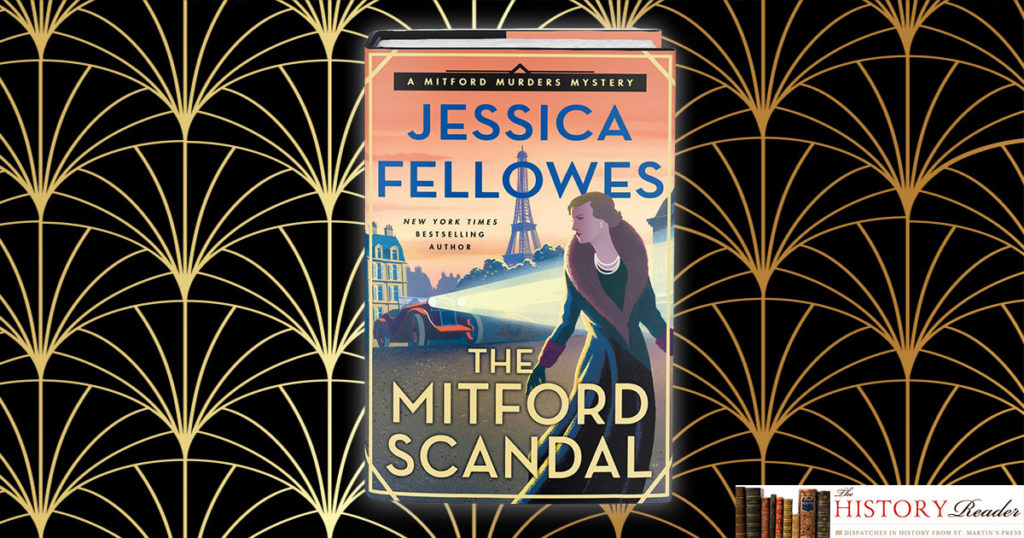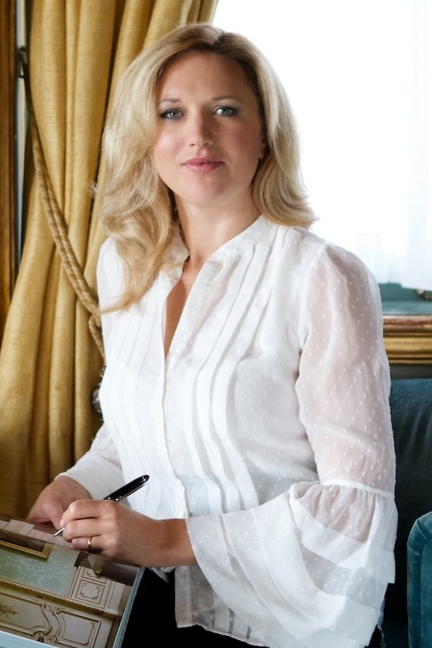By Jessica Fellowes
Jessica Fellowes discusses the history behind her recently released novel, The Mitford Scandal, focusing on the birth of jazz in America and its cultural impact on post-WWI London.

In 1919, Britain was a country devastated by six long years of frontline war. No money, no men, no hope.
And then, there was jazz.
If ever a Phoenix rose out of the ashes, it was jazz in the aftermath of the war. Britain was broken but America had raced towards the bright, electric lights of the future, producing Cadillacs, toasters, Hoovers, radios…
And jazz.

Photo is in the public domain via Wikicommons.
In 1919, Original Dixieland Jazz Band came and played at the London Hippodrome on April 7th and they blew the lid right off. It wasn’t long before they were asked to give a performance to the Prince of Wales (the future naughty King Edward VIII, who abdicated the throne in favour of his love, Wallis Simpson) at Buckingham Palace. With that, jazz was the beat of everyone’s footstep, the thrum of their walk. It spawned nightclubs in Soho that were frequented by the gangs of South East London, shaking their stuff with the Bright Young Things of the aristocracy. Jazz was the unifier, bringing together the young against the old, the cool cats against the stuffed shirts, the Arties against the Hearties. Meanwhile, it ignored class, and that alone made it the greatest social revolution since King Harold got an arrow in his eye.
There was a move towards a more cosmopolitan attitude, too, though it fell short of today’s mores by some margin. A black jazz singer-pianist, Leslie ‘Hutch’ Hutchinson, came to London in 1926 from New York and took high society by storm. Rumoured to have been the lover of Edwina Mountbatten, Ivor Novello, Cole Porter and Talullah Bankhead, he drove a Rolls Royce and was the star entertainer at lavish Mayfair parties. Yet he was made always to come in by the servants’ entrance. The coolest nightclubs – The 43, Victors – hired Hutch or the Blackbirds, an all-black, all-female troupe, and were frequented by both high and low society dancing the latest steps alongside each other.
Those women who were no longer looking at marriage in their future realised they could live an independent life instead. One without chaperones or stiff-upper-lipped fathers breathing down their necks as they raced around town in motor cars, lived in apartment blocks, and went out to work. At night, they drank cocktails and flirted before hitting the dancefloor. Dresses were required to be looser – no more damned corsets – and shorter, so they could move more easily. Attention was drawn to the legs, which were now encased in colourful silk stockings and shod with high-heeled shoes embellished with fanciful detail. All the better as you kicked your heels.
Men, too, realised life was too short to be led according to the uncomfortable strictures of machismo. There was an embrace of the arts – to be a writer, a painter, a poet, was a fine thing indeed – and with that, a looser cut of the cloth, quite literally. Men wore flowing scarves and fancy dress wherever possible; amongst the upper classes there was a fashion for the fantastical, in their clothes and in their drug-taking.
There were plenty, of course, who abhorred all this. The young were ruined and ruinous. Was it for this — promiscuous, flighty behaviour, as they shook their bodies violently to music that was discordant and painful to hear — that they had fought the war? But the young like best that thing of which their parents disapprove. We have much to thank that generation for — their embrace of jazz in 1919 gave us modern life, much as we know it today, almost a hundred years later.

Jessica Fellowes is an author, journalist, and public speaker. She is the author of The Mitford Murders novels as well as the New York Times bestselling official companion books to the Downton Abbey TV series. Former deputy director of Country Life, and columnist for the Mail on Sunday, she has written for the Daily Telegraph, the Guardian, The Sunday Times, and The Lady. Jessica has spoken at events across the UK and US, and has made numerous appearances on radio and television. She lives in Oxfordshire with her family.
